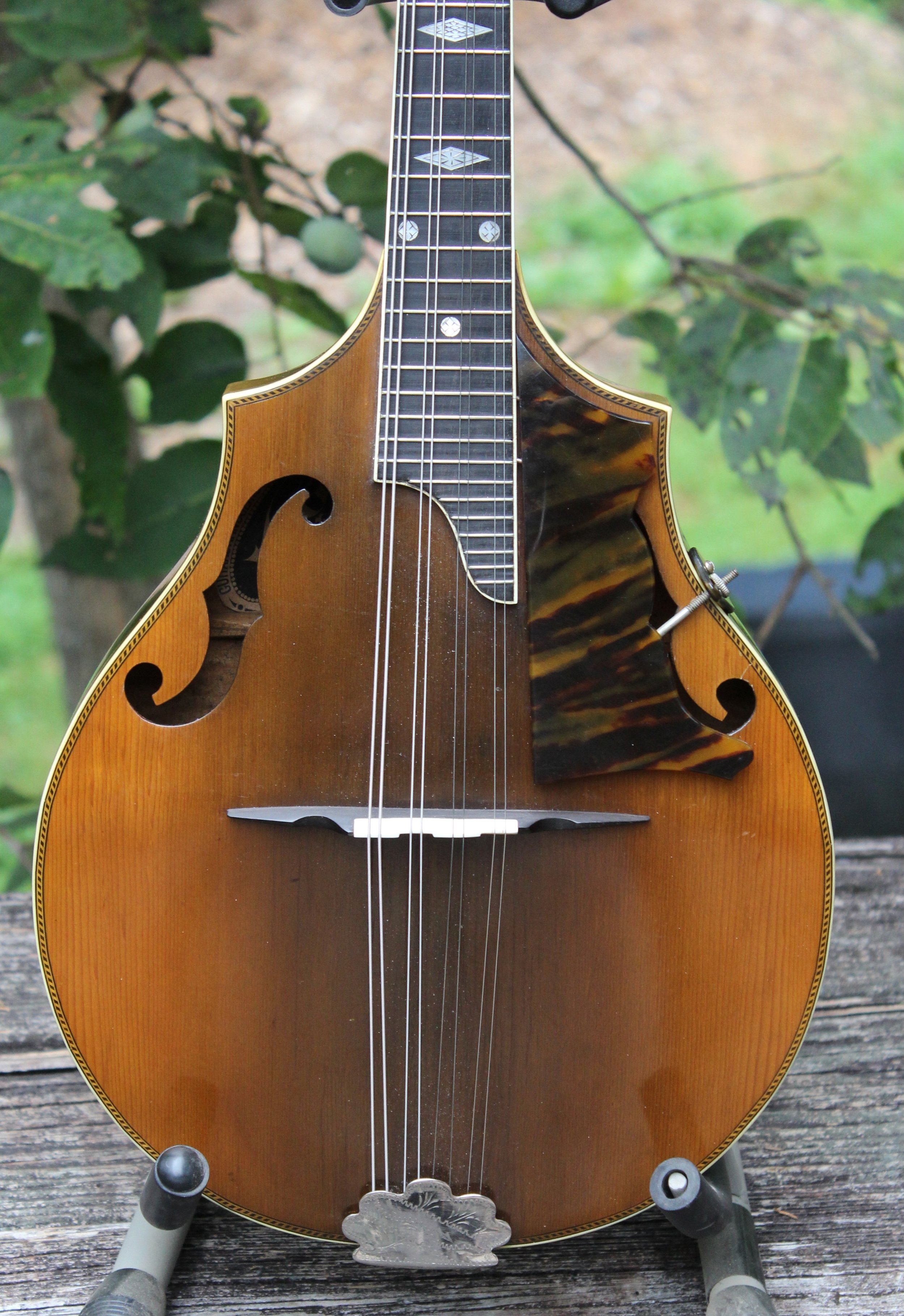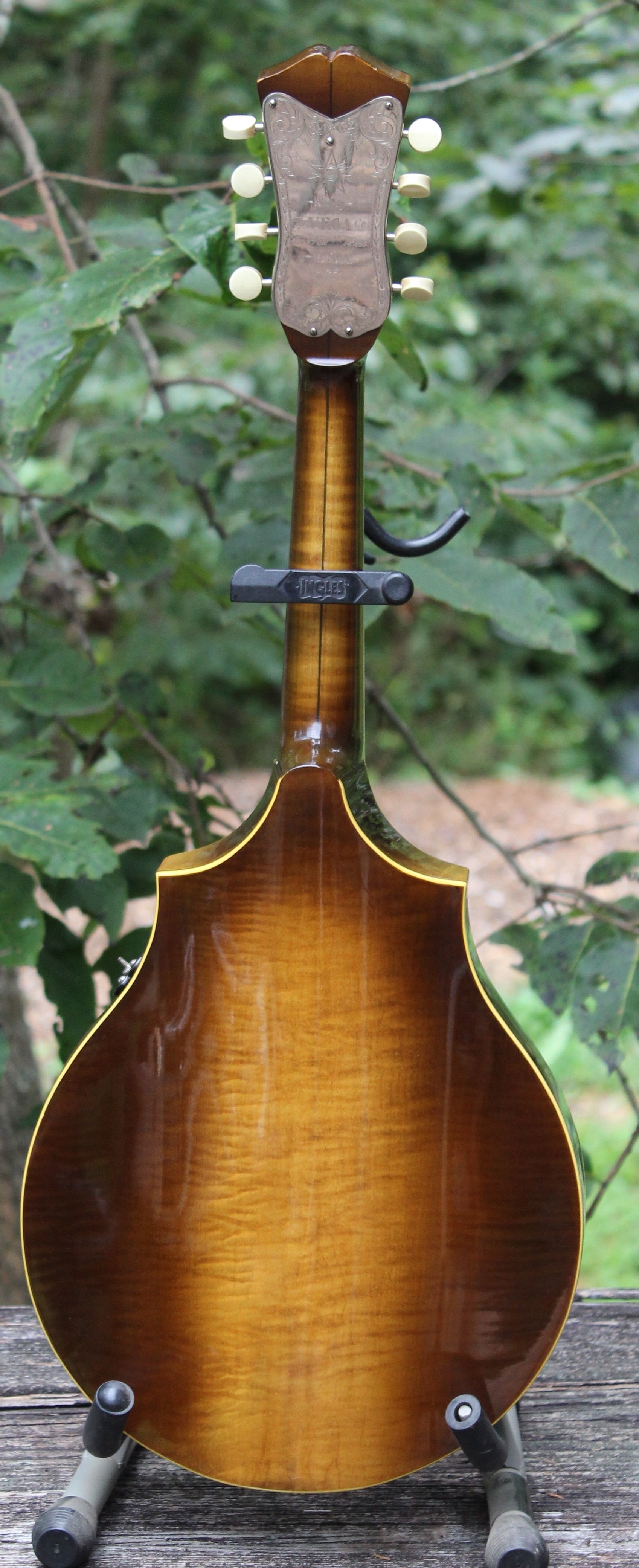Ca. 1929 Bauer Model Vega







The Bauer Model Vega Mandolin, circa 1929. Without doubt, this is one of the rarest mandolins we have ever had, an extremely high-quality instrument that was Vega’s answer to the Gibson F-5. Features include soundboard of fine-grained Adirondack spruce; cylinder back, rim and 3-piece neck of figured curly maple; F-shaped sound holes, two-color reverse-burst with varnish finish; long neck and double cut-away (to give clear action to the 15th fret); “rope” inlaid marquetry top border; ivoroid binding top, back and fingerboard; engraved mother-of-pearl position markers; engraved silver medallion on peghead front and highly engraved silver plate back of peghead; Geib and Schaefer red-lined form-fitted case. Specifications include (in inches) 13 7/8 scale; 1 5/16 nut width; 1 1/2 fingerboard width at 12th fret; 1 7/8 inch body thickness at rim; 2 1/2 body thickness at center of cylinder; 9 11/16 body width at widest point; 5 1/4 body thickness at upper bout; rounded neck profile.
While many vintage mandolin aficionados will be familiar with the Vega cylinder back mandolin, this is quite a different design that we consider a significant upgrade. Walter Kaye Bauer, who had been the first to play a Gibson F-5 in Lloyd Loar’s own ensemble in 1922, had been a Gibson endorser and agent throughout the 1920s. While representing Gibson at the trade-show booth of the Guild convention at the Commodore Hotel in New York City in 1926, Bauer struck up a friendship with William Nelson who had replaced David Day representing Vega. Soon, Bauer became a staunch Vega supporter, and by 1928 began a collaboration with Nelson to design an instrument that Bauer hoped would rival Lloyd Loar’s design for the F-5. Bauer hand-picked the spruce and maple woods and incorporated many of the Gibson/Loar designs such as f-holes, carved top; longer neck and elevated pick guard while keeping the Vega identity with such appointments as cylinder back and ladder bracing. The prototypes of the “Bauer Model Vega mandolin” appeared by 1929, and the model was included in the 1930 Vega catalog at a price of $175. The financial situation in the country undermined any hope of a future for this expensive design, and Vega dropped the model and returned to more affordable designs.
While playability may require some adjustment for a player used to a Gibson style instrument, we find such effort more than rewarded. There is plenty of volume, surprising projection, clarity and intonation here that makes this mandolin stand out in any ensemble. It is very much at home in classical, jazz, Celtic or ethic musics, and for a joyful shift, it makes the old-time fiddle tune even more lively. Do not expect a bluegrass chop chord here, but its lead lines would certainly be heard amongst the most powerful banjos and fiddles.
For a limited time, we are offering this rare Circa 1929 Bauer Model Vega Mandolin for $12,500. We include free shipping east of Mississippi and shared costs to other destinations.





